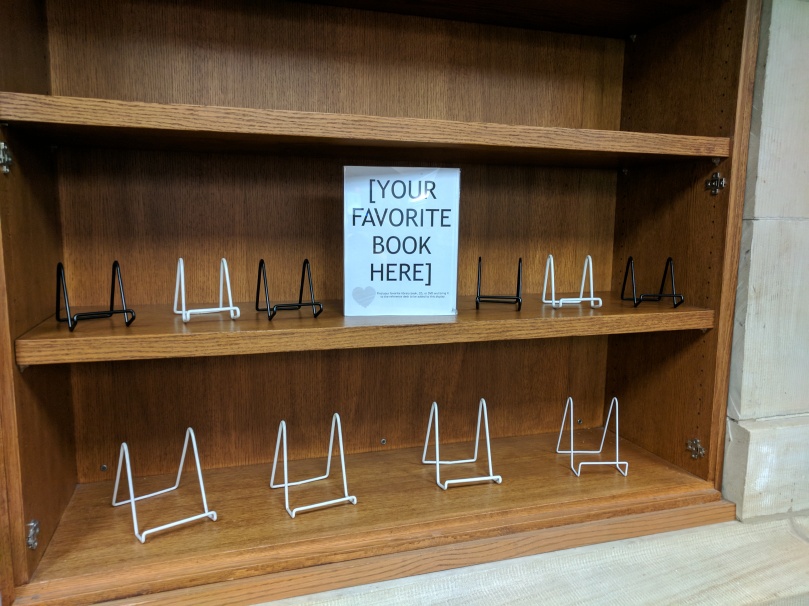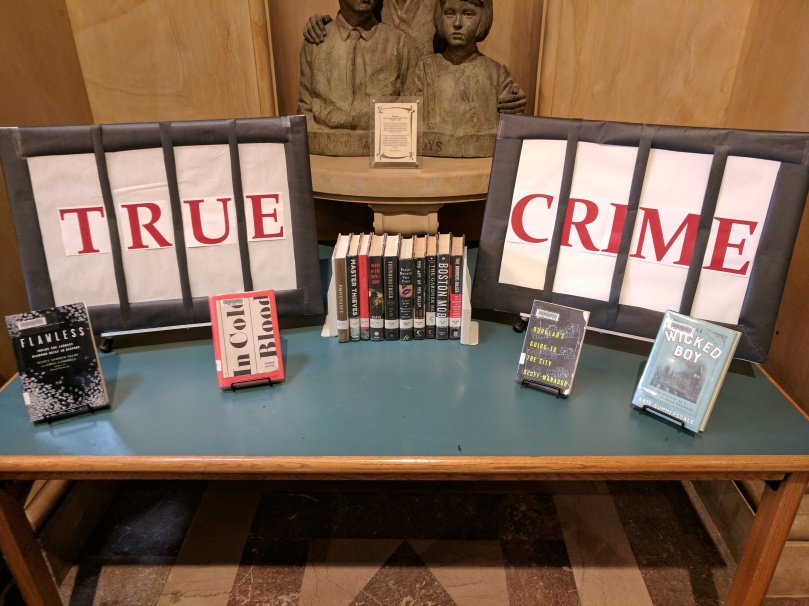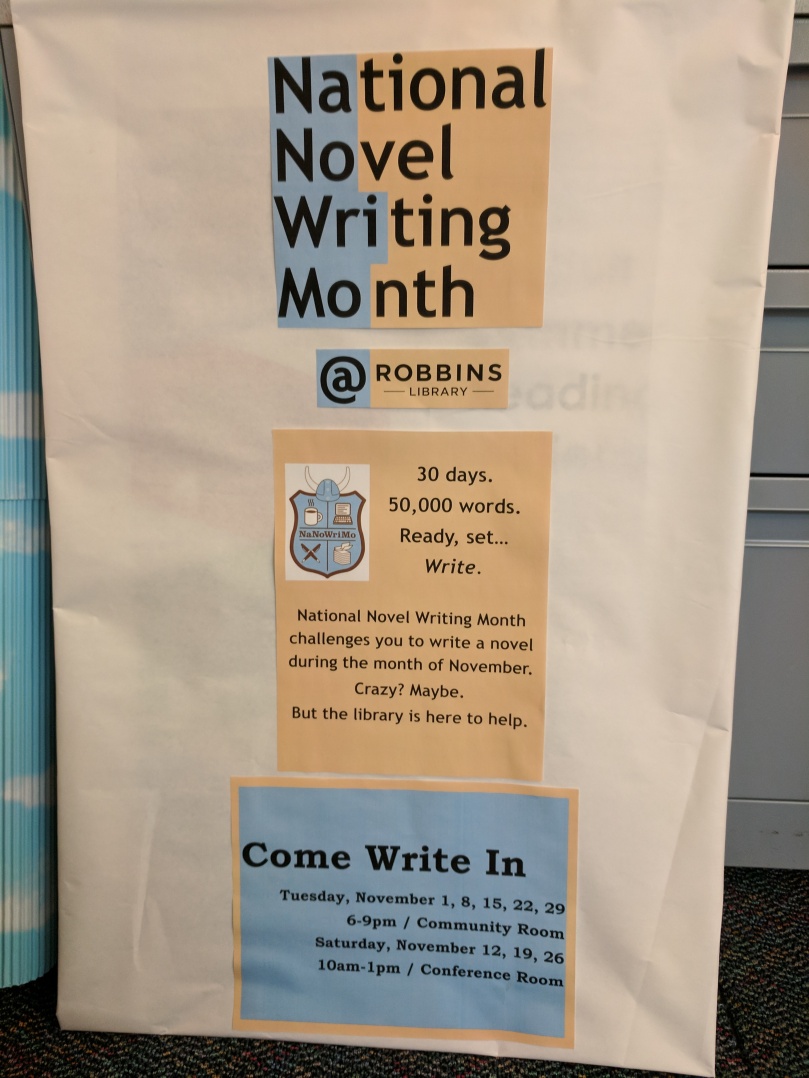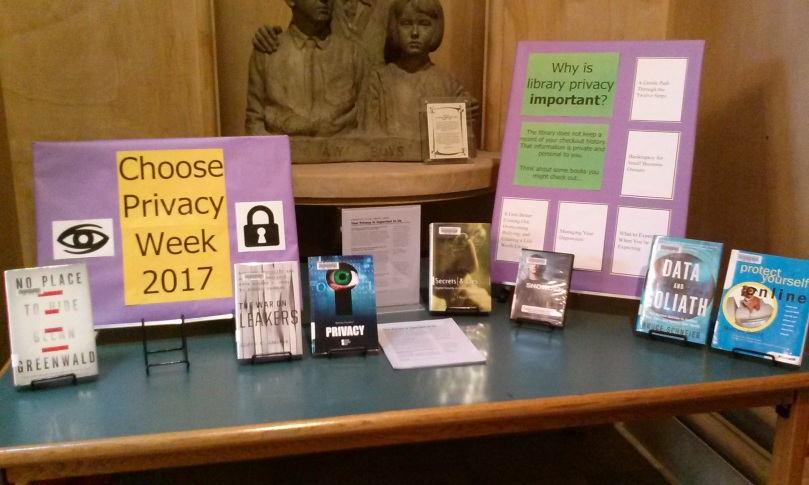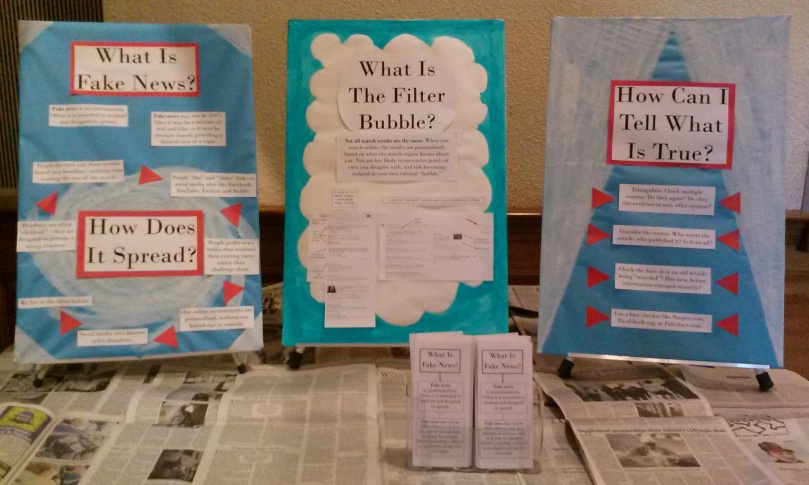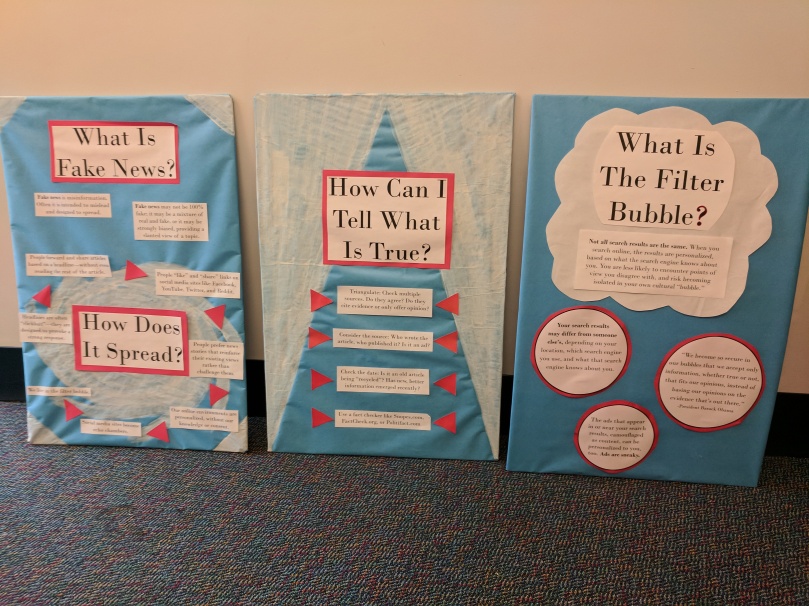
This week I attended a meeting of the MetroWest Program Planners at the Hopkinton Library, and after the meeting we got a tour of the recent redesign and addition (they reopened October 2017).

There was so much to love about the new library, I almost don’t know where to begin. But if you’ve been reading here long, you know how I love mobile, modular furniture, so we can start with the fact that everything is on wheels: tables, chairs, displays, even the circulation desk (though the circ desk, we were told, is heavy and they don’t plan to move it often. The reference desk is not on wheels, but that is because it moves up and down). Many of the tables fold up, as well, so they can be folded and wheeled out of the way to make room for events.
Now, let’s go upstairs, and work our way down. Upstairs is the children’s room; it has historically been upstairs, and it was important (to the community? to the staff?) that it remain there. It had beautiful light from lots of windows; a friendly low desk with display space built into it (they feature a different kid’s collection each month); a central area with low tables and chairs; a puppet theater and a Duplo table; and plenty of little reading nooks with built-in benches (okay, not modular, but very cozy). There was also a glassed-in separate room for storytimes and other programs, with a little cart of floor mats, built-in storage cabinets, and two sinks (big and small). Perfection!
Above, clockwise from top left: A brilliant, double-pun bulletin board display; the central area of the children’s room; a puzzle corner; a reading nook.
Downstairs on the main floor is the circulation desk, new books, adult fiction, the teen room, a large meeting/conference room (formerly part of an Episcopal church, incorporated into the library in 1967 if I remember right), and a smaller board room that was part of the original library (complete with grandfather clock donated in the early 1900s).

Let’s talk about the teen room: the awesome, amazing teen room! Separated by a glass wall from the public computer area, adult fiction, magazines, and newspapers, the teen area is obviously unique; visual clues such as paint color and matching carpet squares (bright blue) set it apart from the rest of the library. There is a laptop bar, plenty of comfy “mitt” chairs, tables and chairs for group work, and of course, a great selection of teen books.

Downstairs on the basement level (with with some windows high up and some skylights – skylights in the meeting rooms! – there was plenty of natural light) is the reference desk, which can move up or down with a switch, so librarians can be seated or standing. (There is also a beautiful heritage quilt on the wall behind the desk.) There is a small reference collection in addition to the nonfiction, a local history room, meeting rooms for small groups, and a larger meeting room set up as a classroom – that’s where Girls Who Code takes place, and there’s a laptop cabinet (on wheels, of course) in the room.
Above: Was it weird to take photos of these? Yes. But I love the inclusive signage AND the transparency built into the door lock so people waiting can tell at a glance if it’s vacant or occupied without having to knock or try the door.
Above: Offering bags for wet umbrellas is a nice touch (and protects the new carpet); cafe-style seating across from the circulation desk offers visitors a place to snack.
Throughout the library, most of the display space is on beautiful endcaps, where books are face-out. In many places, displays are coordinated so a flyer for an event is positioned above relevant books. Overall, it’s an impressive, clean, friendly place that will serve its population flexibly for years to come. Bravo, Hopkinton!










